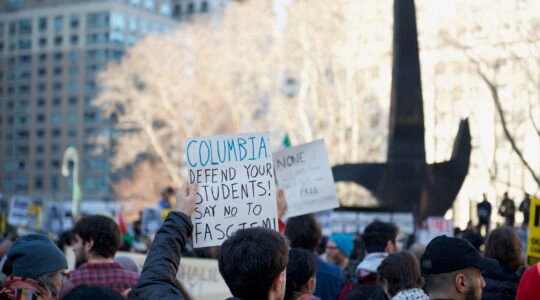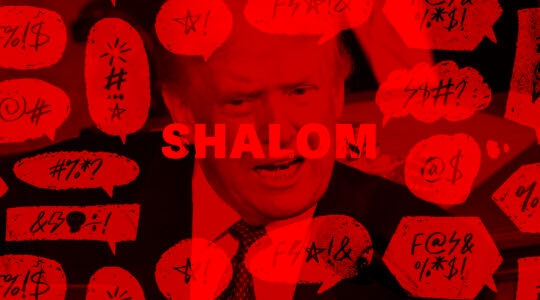I never met Philip Roth. I did take a cold shower in his room, though.
I was at Yaddo, the writers’ and artists’ colony in upstate Saratoga Springs, where Roth stayed multiple times throughout his writing career. The residents were told who had stayed in various rooms. Mine, called simply “The Breast Room,” is supposedly where Roth wrote his novel “The Breast.” The feature of the room that leads me to believe this plausible is a plaster appendage that hovers over the writing desk. It was cone shaped and had a protrusion at its tip, and if you were a certain kind of writer, as Roth was, you might envision yourself sitting directly beneath an enormous breast, its nipple hovering over you and dripping the milk of inspiration, enabling you to craft a work that would showcase your true genius.
Though I have found no other corroboration for this origin story, I imagine that at the beginning of Roth’s stay at Yaddo, he had no plans for what to work on. Drinks in hand, Roth and other guests were looking at the protrusion above the desk when one said, “Hey, Roth, how does it feel to sit under a giant breast every day? I dare you — inhabit it!”
The other feature of the Breast Room that was anomalous was the shower. It yielded only cold water. I wondered whether fearing to expose myself to the freezing liquid in my shower was somehow a metaphor for my anxiety around exposing myself in writing and the pain it might cause.
After a day or two of sponge baths and showering in the hall, I saw a member of the grounds crew and asked whether my plumbing might be fixed. He explained, patiently, that the shower in my room had been installed improperly so that when the dial was turned to hot, the water that surged forth was cold, while when the dial was reversed to cold, pleasantly steamy water would cascade out. I was sure that someone on the grounds crew, trying to further the cause of literature, had specially installed this shower so that Roth, growing inflamed as he wrote his sexually charged work, could cool himself off from time to time.
After contemplating this facet of the room’s plumbing, my thoughts turned to what it meant for my own literary powers to be in the very room in which Roth had dwelled.
I had not been a huge fan of Roth before this, though I had taught “The Counterlife” (1986) in a course on Jewish-American fiction at Smith College in fall 2002. Now in his room, I wanted to know more about the writer I had thought of only as a resentful misogynist. My image of Roth, until I stayed in his room, was of the ultimate exhibitionistic writer, never troubled by exposing himself, willing to say and explore the most clandestine and messy of human topics if he felt it necessary to further his literary output.
The only Roth book on the shelves of the local Saratoga Springs Borders bookstore was a collection of essays titled, “Reading Myself and Others.” Reading his 1974 essay — “In Response to Those Who Have Asked Me: How Did You Come to Write That Book, Anyway?”— I learned that writing about masturbation in “Portnoy’s Complaint” was not simple. Roth felt, “For me, writing about the act had, at the outset at least, to be as secret as the act itself.”
Sitting at a desk where he sat, I was shocked by this revelation. I assumed he was born ready to inflame taboos and infuriate readers with his imperfect characters and sexual fetishes. How did he finally lay claim to the raw adolescent sexuality of Portnoy’s voice? He speaks about having to access “brash, shameful, masochistic, euphoric, vengeful, conscience-ridden exhibitionism” in order to begin to write “Portnoy’s Complaint.” The device he used to get there was the creation of Portnoy’s psychoanalytic monologue. Roth needed “the listening ear: the silent Dr. Spielvogel.” I am fascinated that the creation of a listener became the technique that brought this writer from secretiveness to exhibitionism.
Perhaps every artist needs to lose that fear of exposure, to be willing to share work, and self, with others, to find a therapeutic listener. Part of the point of creation is to let others see one’s work — getting and having an audience. Knowing this about Roth, knowing that even a brash writer like himself would be nowhere without a listening ear, emboldened me. I was able to write well in that room, partly because of the freedom from the responsibilities and stresses of everyday life, and partly due to a sense of his spirit, emancipated by knowing a listening ear was at hand.
And that is how I would like to remember Roth, who died last week: as a writer who learned to free his own voice and use his gifts to the utmost. As a writer, Roth would appreciate being remembered by a tribute to him in fiction, specifically the recent debut novel “Asymmetry” by Lisa Halliday, who had been in a relationship with him in the past. Halliday’s name for the Roth character is Ezra Blazer. The notion of a blaze — incandescent, electric, bursting through with heat and energy — seems as appropriate a tribute as any to the late Roth.
Roth and his voice will be missed. But the books are still here to be read, and the energy still here to be felt.
Beth Kissileff is the author of the novel “Questioning Return” and “Reading Genesis: Beginnings.”
The New York Jewish Week brings you the stories behind the headlines, keeping you connected to Jewish life in New York. Help sustain the reporting you trust by donating today.





